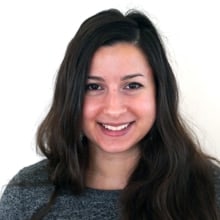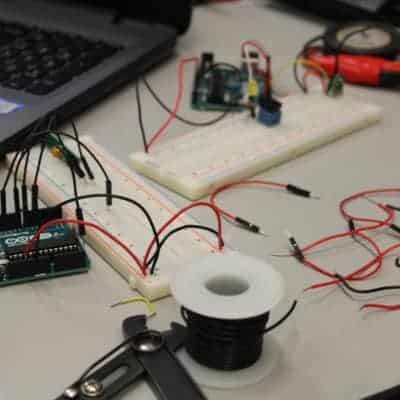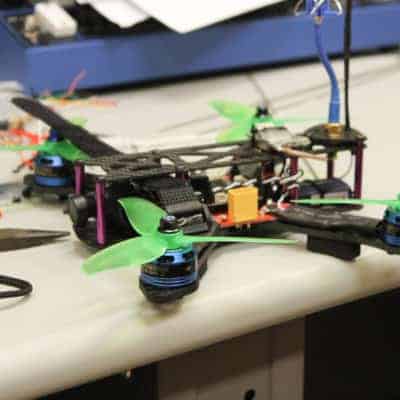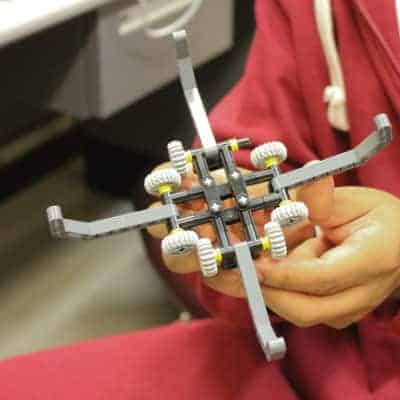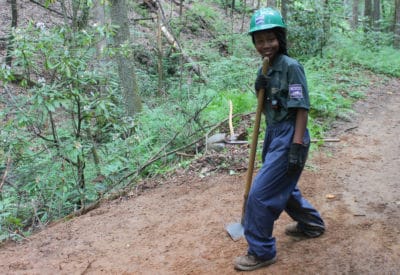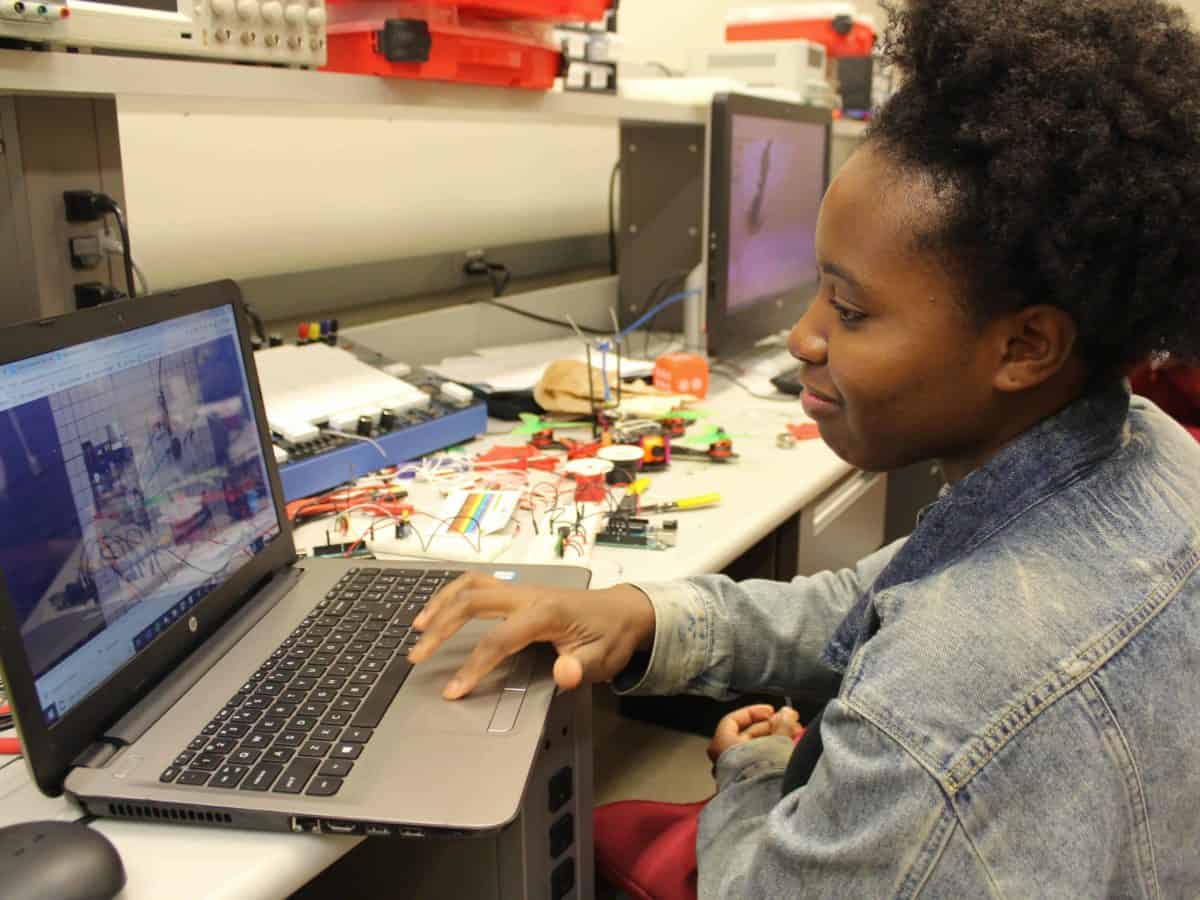

“Looks like you’re doing science,” said Professor Caesar Jackson as he entered the room. “It’s a mess.”
Seven students sat along a row of computers with their in-progress creations scattered across the desk tops: circuit boards, claws, random parts, batteries, and sketches.
“We’re trying to create an attachment for a drone to be able to lift and carry things,” said junior Deandria Harper. “This is inspired by Amazon’s service Prime Air, where they’re delivering packages by drones.”
Harper’s box design with project partner Pryor Gibson would have a closing door to push in objects. “The first thing I looked at was a claw and then I [felt] like everyone was going to do a claw,” said Harper. “So I was like, ‘I want to be outside the box.’ But I built a box!”
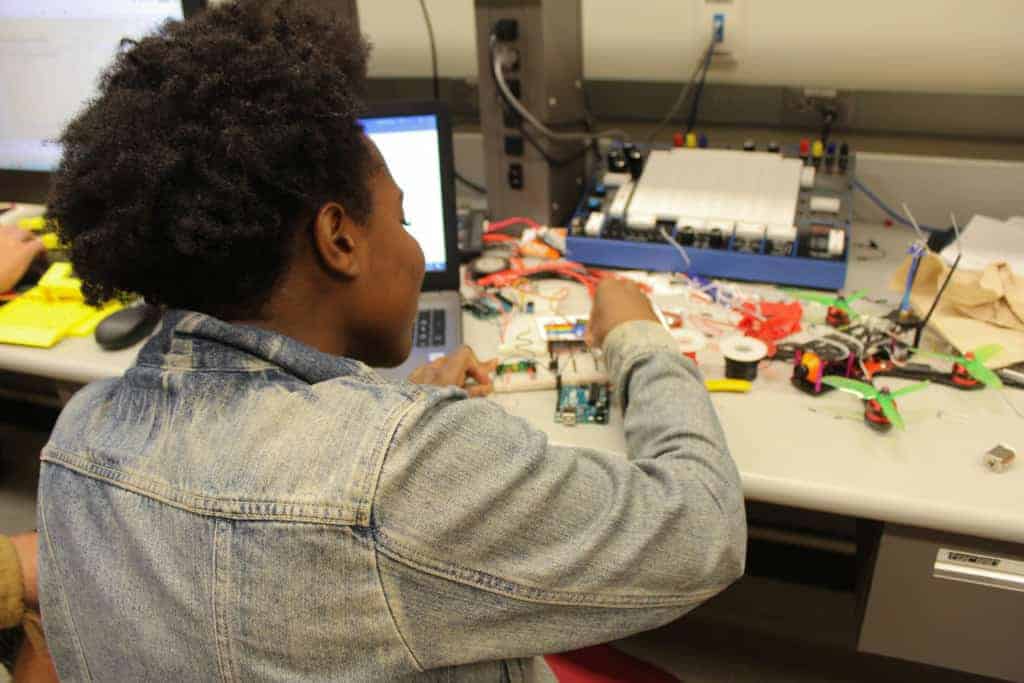

The drone project was the focus of this year’s Research, Discovery and Innovation (RDI) Summer Institute, funded in part by the Duke Energy Foundation. Students spent the first week at NC State University learning about their drones and then the following four weeks at NC Central University, creating their “grab” designs with 3D software and printers.
The Central-State partnership expands beyond the RDI Summer Institute. Students involved in the summer program were also in the 3+2 program, launched in 2015. Students focus on a physics degree and science and math requirements for three years at NC Central before moving on to two years at NC State to complete another degree in electrical or mechanical engineering. There are currently 15 students enrolled in the dual-degree program.
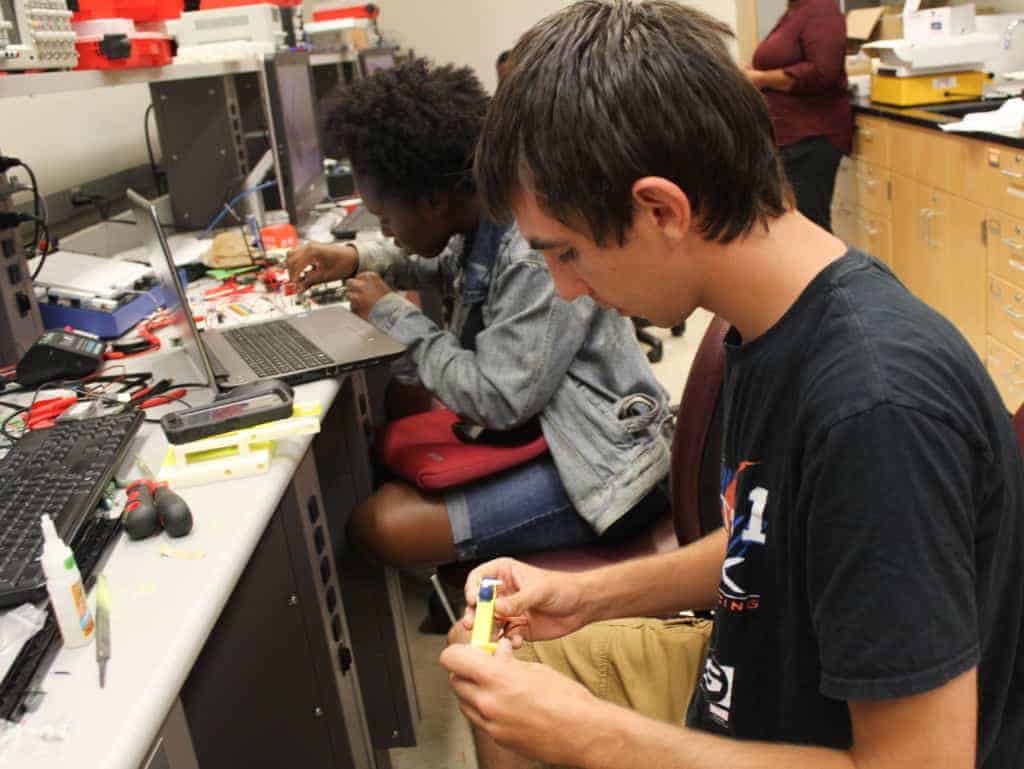

“The fact that I was able to get two degrees instead of one, it seemed like a better environment for me,” said Mike Cruse, an undergraduate student who plans to continue the program on the mechanical engineering track.
“My ultimate career goal is to work for the Department of Defense in the testing and development of firearms,” Cruse said.
Cruse’s peers also expressed long-term goals in engineering.
“My dad drives trucks and he gets this thing called Trucker’s Shoulder, so he loses movement, and I can tell sometimes he can’t even move his whole arm,” said rising senior Roosevelt Greenwood. “I was thinking maybe I could come up with a way to help fix that.”
“I feel like a final goal for me is actually having my own company … [They] really push entrepreneurship,” said Greenwood of the 3+2 program. “At the same time, they focus on your personal goals. They really do push you to get good grades and do well in school.”
The supportive environment is fostered by Tanina Bradley, professor and 3+2 program adviser.
“Our adviser, Dr. Bradley, has been really consistent in trying to help us get to the next level,” said Cruse.
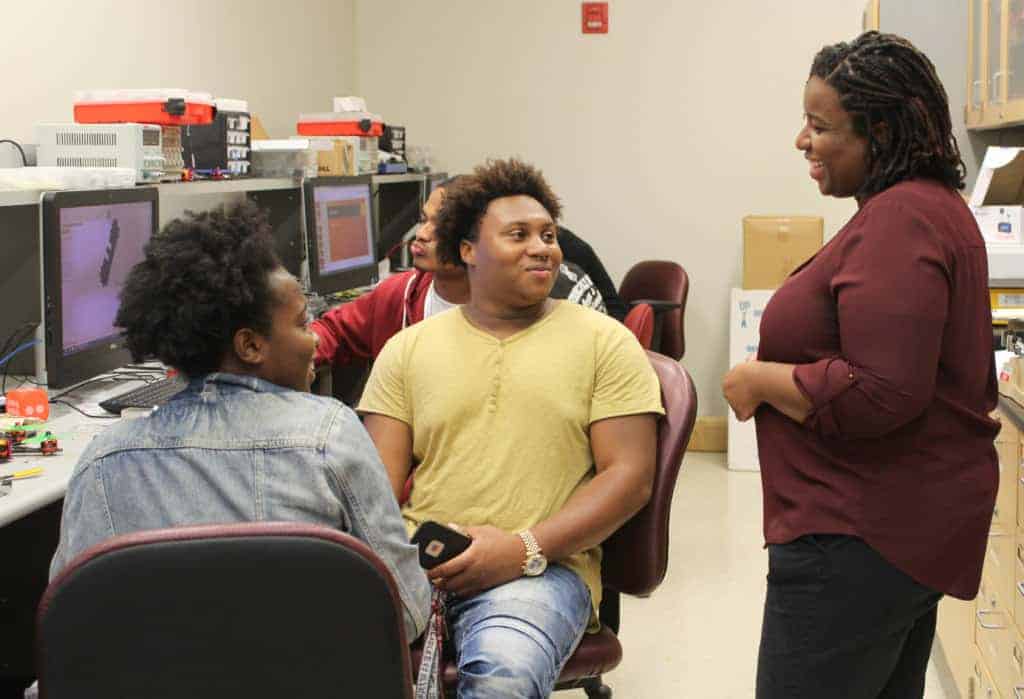

For Bradley, physics and math “touch everything” from water systems to electricity. But she also knows the subjects can be tough for students.
“Whether you’re excelling or you’re not doing so well, it’s just a tough process to go through,” she said. “So you have to have people who understand the struggle and can tell you, ‘There’s a light at the end of the tunnel. Just keep going. You can do this.'”
Deandria Harper said she always finds that she can go door-to-door to ask for advice from her physics professors. And for Harper, her interest in physics and engineering started well before college. She comes from a family of three generations of electrical engineers and got a head start in math while attending James E. Shepard Middle School in Durham.
“I was able to start accelerated math, so I started high school math in seventh grade,” Harper said. “I was able to squeeze in a few extra math classes in high school, and that definitely fueled my interest in STEM.”
Because physics and engineering are both math-based, Jackson said a strong foundation in math is needed before entering college. However, Jackson, as the principal investigator on the grants supporting the 3+2 program, recognized that several of his students come from disadvantaged backgrounds. He remembered coming into the STEM field as one of the few African-American men.
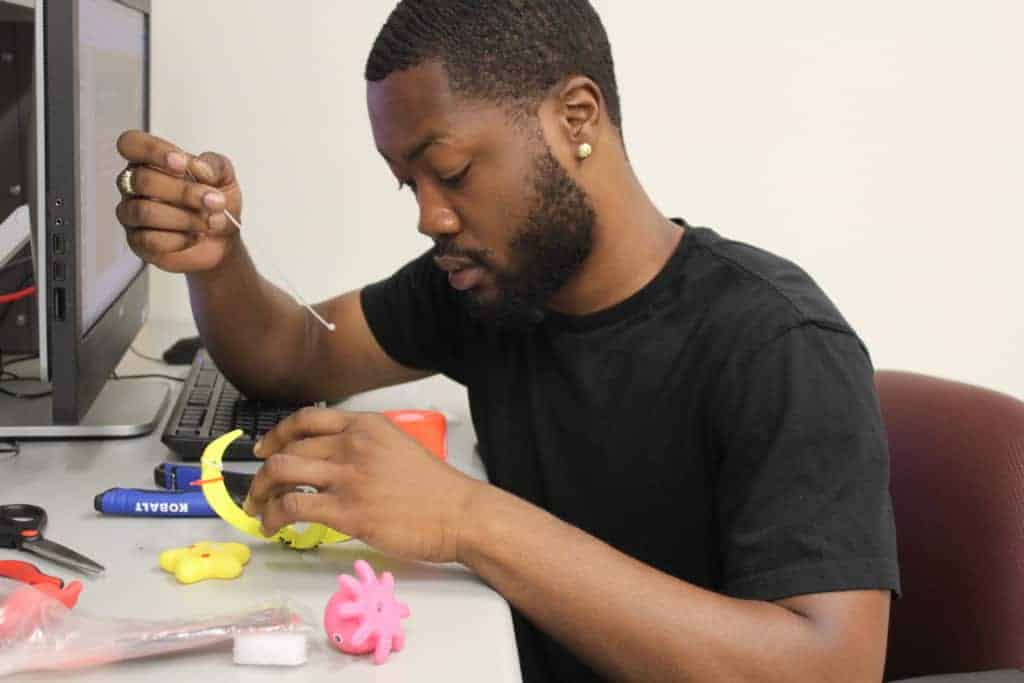

“STEM education, particularly for underrepresented minorities, is a very important matter to address,” said Jackson, who knew a Historically Black College (HBCU) would be his calling when he entered the field of higher education.
“Theirs was the population of students that I was interested in helping to introduce to STEM education and STEM careers,” Jackson said. “It is the STEM areas that are the drivers of the economy through technology advancements and innovation.”
Through the 3+2 program, students achieve the theoretical grounding of physics and experience the applied aspects of engineering.
“But ultimately, I want them to succeed in whatever goal they have,” Bradley said.
